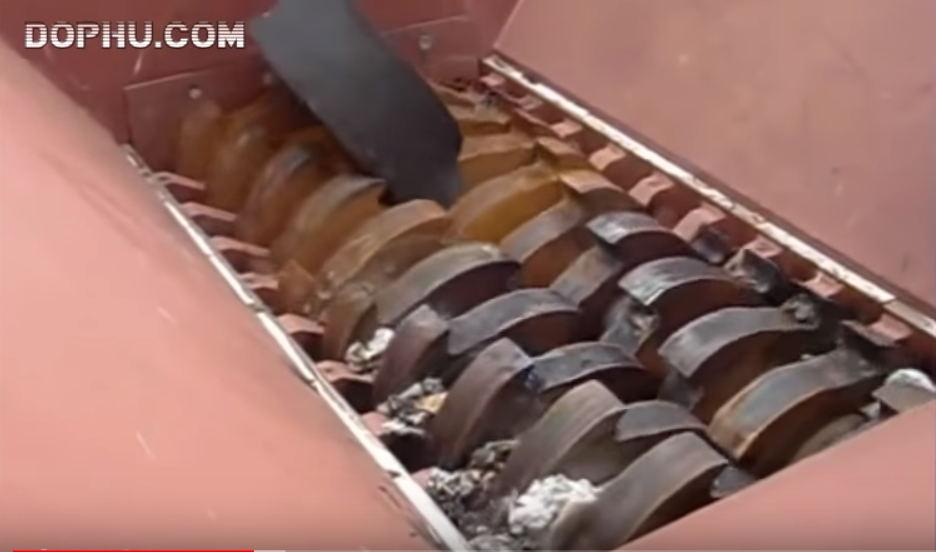It might be worthwhile for a commercial 3D printing service to grind scrap and re-melt / re-extrude filament, if they were processing hundreds or thousands of pounds of scrap a week.
For home use it would be senseless in my opinion to develop a grinder and filament extruder to save a few $ on printing filament.
The materials and motor alone for a grinder would amount to many thousands of $. A grinder for plastics parts will need to have quite heavy construction and a very powerful electric motor to deal with the forces involved in shredding even small plastic parts. By the way, the feed stock pellet / particle size for an extruder cannot just be any old dust or big lumps, in fact most commercial extruder units have closely specified sizes of acceptable feed stock particles, and state that fines (dust) should not be used or the screw can become jammed. I have seen this happen in injection moulding machines and it is no joke to fix. Usually to get decent filament properties and decent extruder performance with minimal hold-up time in the extruder the extruder firm will add some virgin pellets of the same resin to the regrind, as others have mentioned. You will need a source for this extrusion grade virgin resin, hope you can find a bag or two somewhere, it is usually only sold in qty to commercial moulders or extruders.
Commercial plastics grinders make one hell of a racket when operating, and shake the floor and the ground under it, your neighbours will not be impressed if you build a similar but scaled down unit.
Any metal particles from your grinder rotors chipping over time would cause some big problems if they got jammed in your 3D printer or extruder. Commercial moulding machines and extruders usually have magnet systems in the material hoppers to trap any metal particles.
If you ever inadvertently mix PLA and ABS grindings by accident, or other combinations of materials, properties of finished parts and processing of the filament will be a nightmare.
As usual with most plastics technology there is a lot to extruding filament and if it is to have decent properties for 3D printing there is a lot to know to get good results in a controllable process. Iffy filament will result in odd 3D print defects.
Hobby time is short – spend it wisely – don't bother to try and make your own filament. Some sort of model or engine or tooling accessory would be a far better use of your time in my opinion.
Edited By Jeff Dayman on 28/02/2018 22:31:24
 Neil Wyatt.
Neil Wyatt.


 _/¯
_/¯

